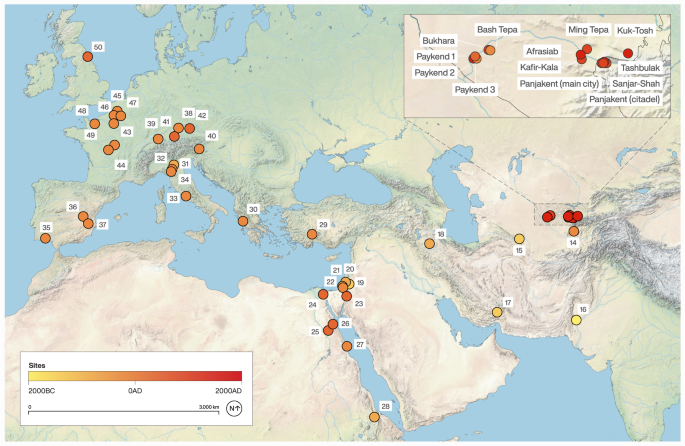2024-04-02 マックス・プランク研究所
<関連情報>
- https://www.mpg.de/21768720/0402-wisy-when-did-the-chicken-cross-the-road-new-evidence-from-central-asia-9347732-x
- https://www.nature.com/articles/s41467-024-46093-2
中央アジアにおける古代ニワトリの考古学的・分子生物学的証拠 Archaeological and molecular evidence for ancient chickens in Central Asia
Carli Peters,Kristine K. Richter,Shevan Wilkin,Sören Stark,Basira Mir-Makhamad,Ricardo Fernandes,Farhod Maksudov,Sirojidin Mirzaakhmedov,Husniddin Rahmonov,Stefanie Schirmer,Kseniia Ashastina,Alisher Begmatov,Michael Frachetti,Sharof Kurbanov,Michael Shenkar,Taylor Hermes,Fiona Kidd,Andrey Omelchenko,Barbara Huber,Nicole Boivin,Shujing Wang,Pavel Lurje,Madelynn von Baeyer,Rita Dal Martello & Robert N. Spengler III
Nature Communications Published:02 April 2024
DOI:https://doi.org/10.1038/s41467-024-46093-2

Abstract
The origins and dispersal of the chicken across the ancient world remains one of the most enigmatic questions regarding Eurasian domesticated animals. The lack of agreement concerning timing and centers of origin is due to issues with morphological identifications, a lack of direct dating, and poor preservation of thin, brittle bird bones. Here we show that chickens were widely raised across southern Central Asia from the fourth century BC through medieval periods, likely dispersing along the ancient Silk Road. We present archaeological and molecular evidence for the raising of chickens for egg production, based on material from 12 different archaeological sites spanning a millennium and a half. These eggshells were recovered in high abundance at all of these sites, suggesting that chickens may have been an important part of the overall diet and that chickens may have lost seasonal egg-laying


